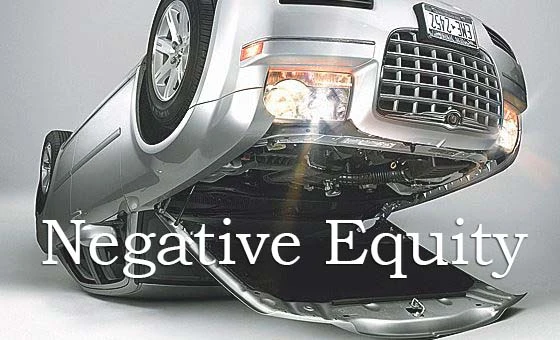Buying a car is one of the most exciting financial decisions most people make. However, as thrilling as driving off with a new set of wheels can be, it comes with financial responsibilities that, if not handled carefully, can lead to problems like negative equity auto loans. Many car buyers unknowingly wind up “upside down” on their car loan, meaning they owe more than the vehicle is actually worth. This situation can make trading in, refinancing, or even selling the car difficult.
In this guide, we’ll explain what negative equity is, why it happens, and most importantly, how to avoid getting trapped in a negative equity auto loan. We’ll also discuss smart alternatives such as auto equity loans, practical use of an auto loan calculator with negative equity, and steps if you’ve already fallen into the trap.
What Is a Negative Equity Auto Loan?
Negative equity (commonly known as being “upside down” on a car loan) occurs when your outstanding loan balance is higher than the market value of your vehicle. For example, if you owe $25,000 on your auto loan but your car’s current value is only $20,000, you have $5,000 in negative equity.
This situation isn’t rare. New vehicles lose between 15–25% of their value within the first year, and if you’ve made a low down payment, your depreciation may immediately outweigh your equity.
Why Do People End Up with Negative Equity?
There are several reasons why car buyers often find themselves stuck with negative equity:
-
Low or No Down Payment – Financing the full purchase price with minimal cash upfront means your loan balance immediately exceeds the car’s resale value.
-
Long Loan Terms – Stretching payments over 72–96 months may reduce monthly payments, but it increases the risk of owing more than the depreciating car is worth.
-
Rapid Vehicle Depreciation – Luxury vehicles and certain models lose value much faster than others.
-
Rolling Over Old Debt – Adding negative equity from a previous loan into a new loan creates a snowball effect.
-
High-Interest Rates – Bad credit loans with high interest prolong payoff times, keeping you upside down for longer.
The Dangers of a Negative Equity Auto Loan
Being stuck in a negative equity loan can create several long-term financial challenges:
-
Limited Refinancing Options: Lenders hesitate to refinance when your loan balance exceeds vehicle value.
-
Difficulty Selling or Trading In: You’ll need to pay the balance difference upfront when upgrading cars.
-
Risk of Total Loss: If the car is wrecked or stolen, insurance may only cover market value, leaving you to pay the leftover balance.
-
Debt Stress: Being cash-strapped by an underwater loan traps you financially and emotionally.
How to Avoid Getting Trapped
The best way to deal with negative equity is to avoid it in the first place. Here are practical steps:
1. Make a Significant Down Payment
Aim for at least 20% down payment on new cars and 10% on used cars. This immediately offsets depreciation.
2. Choose Shorter Loan Terms
While longer loan terms may seem affordable monthly, a 36- to 48-month loan prevents you from staying upside down for most of the loan term.
3. Pick Cars with High Resale Value
Research vehicle makes and models with lower depreciation rates. Brands like Toyota, Honda, and certain trucks retain value better than luxury sedans.
4. Avoid Rolling Over Existing Debt
If you’re already upside down, resist the temptation to roll negative equity into a new loan. Instead, consider refinancing or paying supplemental cash.
5. Use an Auto Loan Calculator with Negative Equity
Running your numbers before committing is essential. An auto loan calculator with negative equity can show you how your loan balance compares with car value and help you plan smarter financing.
Using Auto Equity Loans Wisely
An auto equity loan is an option if you’re in need of cash or want to consolidate debt without selling your car. Unlike standard loans, where you finance a car purchase, an auto equity loan lets you borrow against the equity in your existing vehicle.
-
If your car is worth $15,000 and you owe $7,000, you have $8,000 in equity. A lender may allow you to tap into some of this value.
-
Many people search for auto equity loan near me online to find local lending options.
Unlike being trapped in a negative equity auto loan, having positive equity can give you financial flexibility. Still, it’s vital to borrow responsibly and ensure you don’t put yourself in a worse long-term position.
If You Already Have a Negative Equity Loan: What Next?
Sometimes the reality is unavoidable — you’re already upside down. Here are steps to protect yourself:
-
Make Extra Payments – Apply any extra cash directly to principal to reduce balance faster.
-
Refinance if Possible – If your credit and vehicle still qualify, refinancing at a better interest rate helps.
-
Drive the Car Longer – Hold on until you pay down the balance enough for equity to flip positive.
-
Consider GAP Insurance – This coverage pays the difference if your car is totaled, protecting you from owing large sums after an accident.
-
Roll Over Equity into a More Affordable Car – If upgrading is necessary, pick a lower-cost vehicle with a strong resale value.
Understanding the True Cost of Financing
It’s tempting to look only at monthly payments when buying a car, but true financial safety depends on total cost. By using tools like a loan calculator and researching depreciation rates, you can safeguard against future struggles.
One of the most trusted auto resources for checking resale values and loan affordability is Kelley Blue Book (KBB), a high-authority and widely respected automotive site. (You can explore their calculator tools and car valuation guides on kbb.com.)
Read More: Should You Get an Auto Equity Loan Near Me or Online?
Conclusion
A negative equity auto loan can feel like a financial prison, locking you into payments on a car that’s losing value. Fortunately, this trap is avoidable with careful planning. By making larger down payments, choosing shorter loan terms, researching depreciation, and using an auto loan calculator with negative equity, you can keep your finances secure.
If you already find yourself with negative equity, don’t panic — there are steps like refinancing, extra payments, or considering an auto equity loan to relieve financial pressure.
Ultimately, the key is long-term financial awareness. Treat your car as a financial commitment, not just an emotional purchase, and you’ll avoid the headaches of being upside down on your loan.









